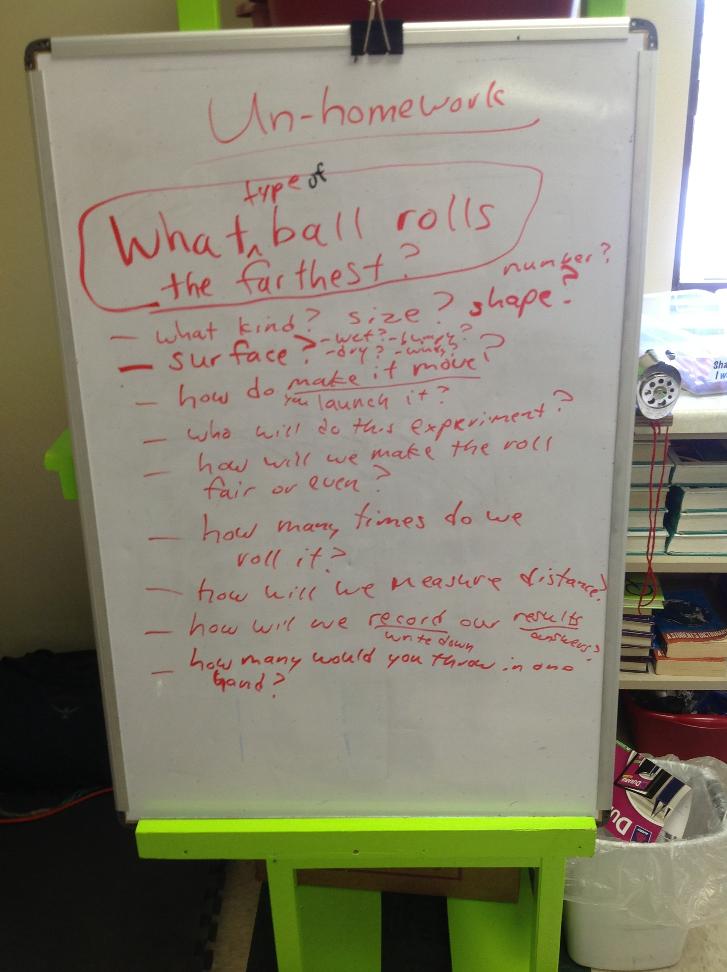Franki Sibberson (who along with virtual colleague, Mary Lee Hahn, write the superb A Year of Reading) has started a new website (Solve it Your Way!) devoted to helping children learn by tossing around questions that beg to be answered through experiments. I was intrigued by this idea and am using some of the early time of our school year, before things really get rolling for good, to explore and play with this idea, and to encourage the children to take on the challenge. Also, projects like this help reinforce the idea that ours is a classroom that thinks.
The first question Franki asked was this one: Which type of ball rolls the farthest?
A couple days ago, I introduced them to the question, and we began to think about how to answer it. I’ve copied a post from our classroom blog below. I’m excited about the possibilities
(Reblogged from my new classroom website.)
Here are the results from yesterday’s discussion of the un-homework assignment #1: What type of ball rolls the farthest? It was a fascinating discussion!
The first response was…”huh???? I don’t get it!” Which was pretty much what I expected. But, as you can see from the notes that I took, the children started asking questions; I simply recorded what they said. Soon, we began to explore the question with a surprisingly scientific outlook. Here’s a summary of our thinking. This thinking may help you devise an experiment to answer the question.
What to roll? Size, shape (footballs, for instance???), how many? What will matter? Will heavy ones roll farther? Light ones? Bouncy ones?
Where to roll? What kind of surface matters? Slippery? Hard? Soft? Will different balls roll farther on different surfaces? (We decided that the surface needed to be the same one for each ball, so it was fair.)
Fairness. Our rolls need to be fair. Using Annika’s wonderful word, We need to launch the balls in a fair way, so one isn’t launched with more force than another. One method Isaac brought up was they could be rolled down the same ramp. Others talked about how they could throw a ball the same; Kadin and others thought that the same person could throw the ball and try to be fair. We decided that the surface needs to be the same for each ball, though.
Measuring and recording. How will we measure the distance? How will we keep track of the distance (create a table? write down the distances?) Will we record only forward distance, or sideways distance, too?
Trials. How many times should we roll each ball? (We worried that one roll might not be accurate enough…) We thought at least 3 times each, but maybe more to make sure?
So, there’s some of our thinking. I’m impressed with the way the children were able to think through experimental design — thinking about isolating variables (though we didn’t talk that way, I’ll introduce those terms later), thinking about how to measure and record results, thinking about what makes a fair try, and thinking about doing several trials to make sure that what we find out is really true and not just a random chance event.
To get to this level of thinking is why we’re doing these projects in the first place!
Remember, if your child does decide to do this experiment, talk it through, plan it out, and try to record some of the experiment on video or photo. That will make for a nice presentation at the end.


We’re going to get started on this today! I also expect a “HUH?” to begin with!
I’m really interested to see what happens with this project in your classroom.
I know that at least two kids have taken up the challenge and are planning an experiment. I hope others do, too, but I want this to grow through enticement, not mandate.